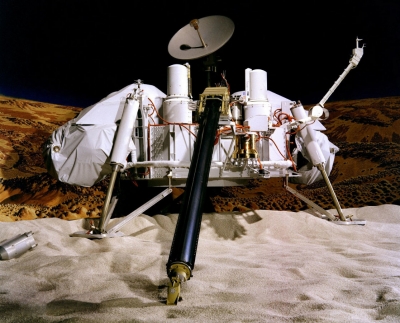
The launch window of 1973 was dominated by the Soviet Union’s missions to Mars. By that time, the Space Race had also come to an end, and it was slowly replaced by growing cooperation between the two countries. In 1975, while the Soviet Union waited it out, the U.S. National Aeronautics and Space Administration (NASA) sent out a pair of identical missions to Mars, Viking 1 and Viking 2, together known as the Viking program.
Viking 1 was launched on 20 August 1975, and Viking 2 followed on 9 September. Both contained an orbiter and a lander each. While all four were successful, the lander of Viking 1 which touched down in the Martian terrain on 20 July 1976 became the first lander to successfully operate on the planet! Previous landers had all failed, except perhaps that of the Soviet Union’s Mars 2. But it too stopped working 110 seconds after landing, and transmitted only a partial image of the planet.
The pictures of Martian valleys captured by the Viking orbiters gave evidence of the massive floods that once used to flow across Mars, and completely changed the way we saw the planet. The landers, on either side of the planet (Viking 1 in Chryse Planitia, and Viking 2 in Utopia Planitia), collected data about the atmosphere and conducted experiments with the soil. They looked for biosignatures in the soil, but the results were not conclusive.
Picture Credit : Google




